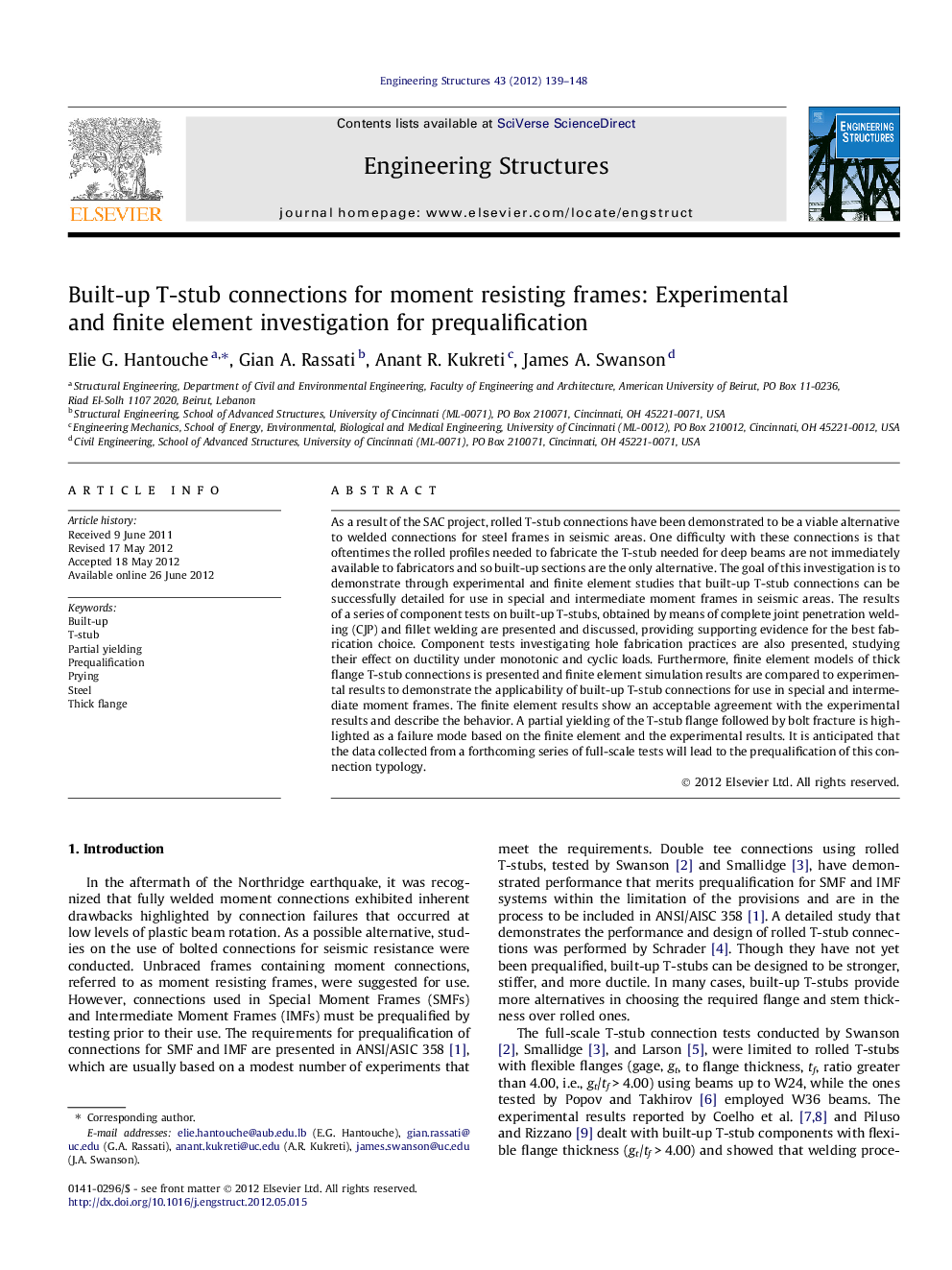| Article ID | Journal | Published Year | Pages | File Type |
|---|---|---|---|---|
| 267380 | Engineering Structures | 2012 | 10 Pages |
As a result of the SAC project, rolled T-stub connections have been demonstrated to be a viable alternative to welded connections for steel frames in seismic areas. One difficulty with these connections is that oftentimes the rolled profiles needed to fabricate the T-stub needed for deep beams are not immediately available to fabricators and so built-up sections are the only alternative. The goal of this investigation is to demonstrate through experimental and finite element studies that built-up T-stub connections can be successfully detailed for use in special and intermediate moment frames in seismic areas. The results of a series of component tests on built-up T-stubs, obtained by means of complete joint penetration welding (CJP) and fillet welding are presented and discussed, providing supporting evidence for the best fabrication choice. Component tests investigating hole fabrication practices are also presented, studying their effect on ductility under monotonic and cyclic loads. Furthermore, finite element models of thick flange T-stub connections is presented and finite element simulation results are compared to experimental results to demonstrate the applicability of built-up T-stub connections for use in special and intermediate moment frames. The finite element results show an acceptable agreement with the experimental results and describe the behavior. A partial yielding of the T-stub flange followed by bolt fracture is highlighted as a failure mode based on the finite element and the experimental results. It is anticipated that the data collected from a forthcoming series of full-scale tests will lead to the prequalification of this connection typology.
► Standard drilled or standard flame cut holes can be used in detailing T-stub connections. ► CJP or fillet welds are acceptable to be used in detailing T-stub connections. ► Finite element results predict failure mode, strength, and ductility. ► Finite element results predict partial flange yielding followed by bolt fracture.
